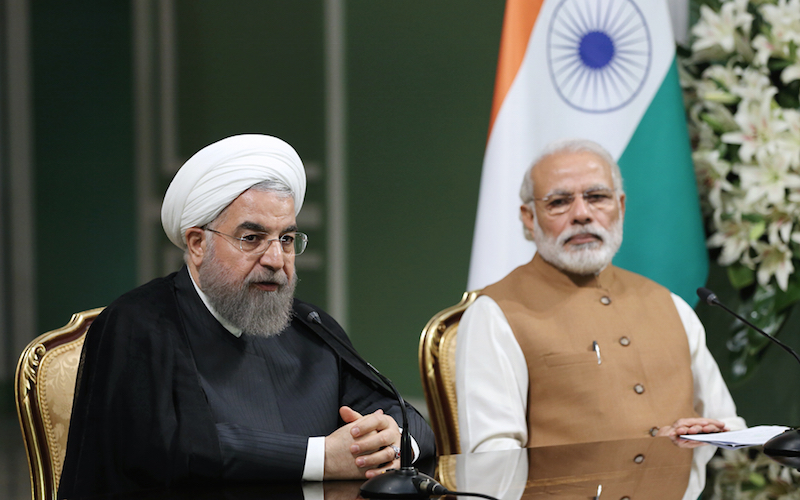
Iran: The New Frontier for India?
Prime Minister Narendra Modi visited Iran from the 22nd to the 23rd of May. His agenda consisted of discussions on trade, investment, energy partnership, and enhancing connectivity. He stated, “Taking concrete steps for enhancing regional connectivity is one of the most important and promising dimensions of the growing cooperation between our two countries. Apart from this, building a genuine energy partnership, cooperation in the infrastructure, ports, railway and petrochemicals sectors and developing the age-old civilizational ties through people-to-people exchanges in the modern times will also be a priority.”
The most important of the 12 agreements signed between Modi and Iranian President Hassan Rouhani was India’s investment of $500 million into developing Iran’s Chabahar port. This port would bypass Pakistan and lead as an entry point to Afghanistan, and onward to Central Asia. It would also give India access to economic opportunities in regions it had been cut off from for centuries. Chabahar, which is located a little over 60 miles from the Pakistani port of Gwadar that is being developed by the Chinese, appears to be a response to the China-Pakistan Economic Corridor which was announced last year, and to China’s growing influence in the area.
The development of the Chabahar port also unnerves Pakistan as the port will weaken their grip over Afghanistan. Once developed, it will reduce their leverage over Afghanistan by being able to deny India a trade route to it. Indian assistance in building rail infrastructure to improve Afghanistan’s connectivity via Iran was also discussed, which would allow the country access to the Indian Ocean.
Though China is already ahead in terms of having a strategic presence in Iran, the port marks an important strategic establishment of India in Iran. This project is a moment of glory for India as it conveys that it is catching up with the Chinese presence in an important Muslim majority country. A trilateral transit agreement was also signed by Afghan President Ashraf Ghani along with Prime Minister Narendra Modi and President Hassan Rouhani. This would significantly boost trade by easing the passage of goods between the three countries.
The two countries discussed intelligence sharing, drug trafficking, and cyber-crime and agreed to cooperate on these issues. They also agreed to cooperate on their fight against terrorism and extremism, which will contribute towards peace in the region. Lifting of the U.S. sanctions on Iran led to furthering the relationship between India and Iran. Iran was earlier India’s second biggest oil supplier before the U.S. sanctions disrupted its trade relations. India’s plans for increasing imports from Iran showed a seven year high as it seems Iran wants to regain its earlier position of being a major player in India’s oil imports. Cultural ties between the two countries were also given a boost by the jointly organized series of programs during the Prime Minister’s visit. An executive program of cultural cooperation between the Ministry of Culture and Iran’s Ministry of Culture and Islamic Guidance as well as a MoU between Iran’s Islamic Culture and Relations Organisation and the Indian Council for Cultural Relations was also signed.
Through his visit, Prime Minister Modi has shown India’s maturing foreign policy as it kept away from Saudi-Iranian rivalries and balanced the relationship between the two hostile countries, independent of each other. The agreements signed are considered as a counterbalancing effort against China’s growing influence in the region through Pakistan.

